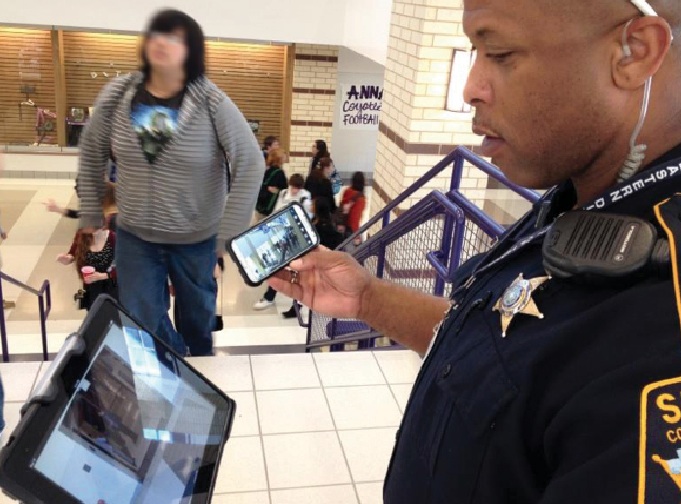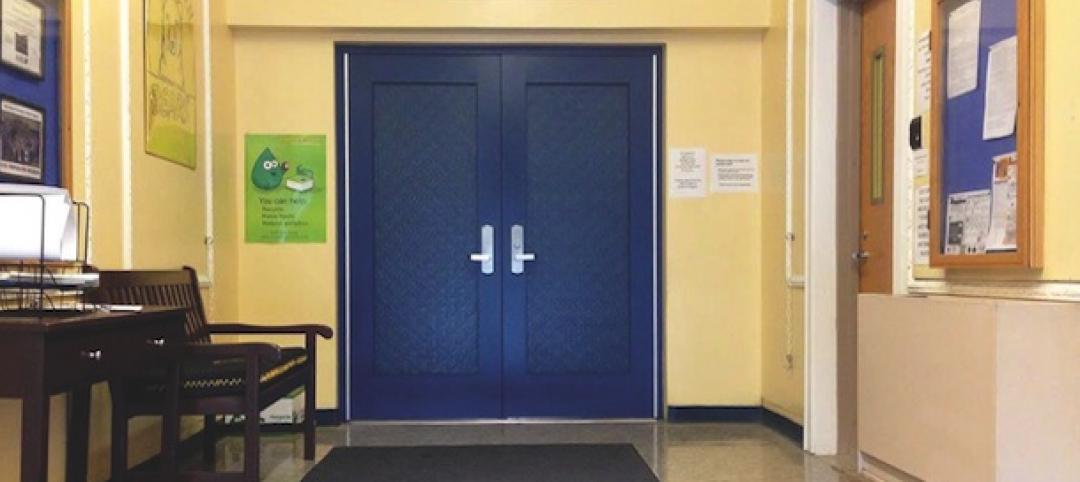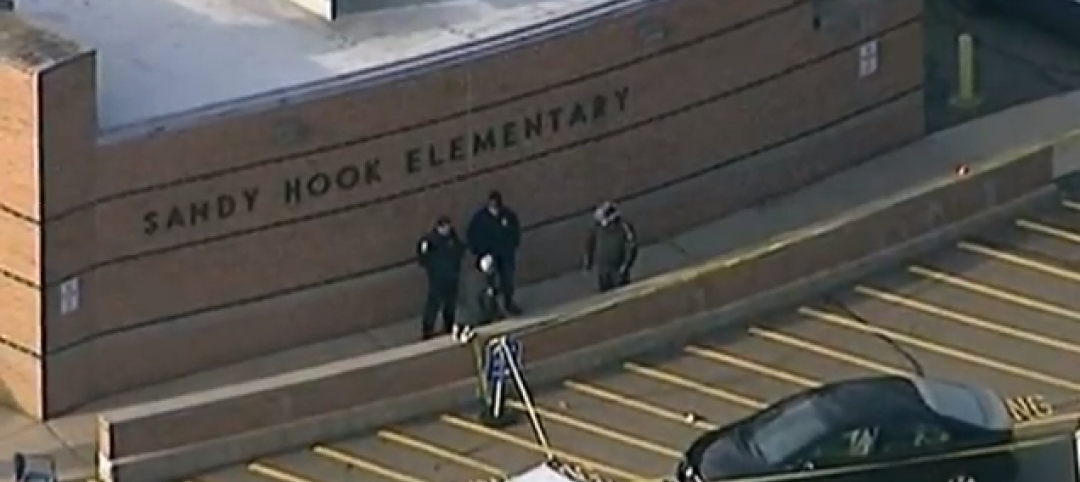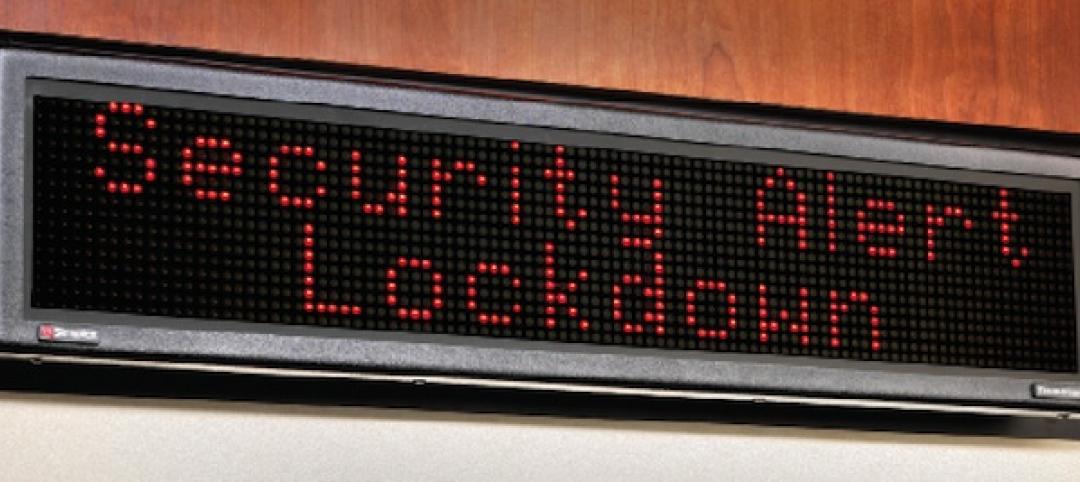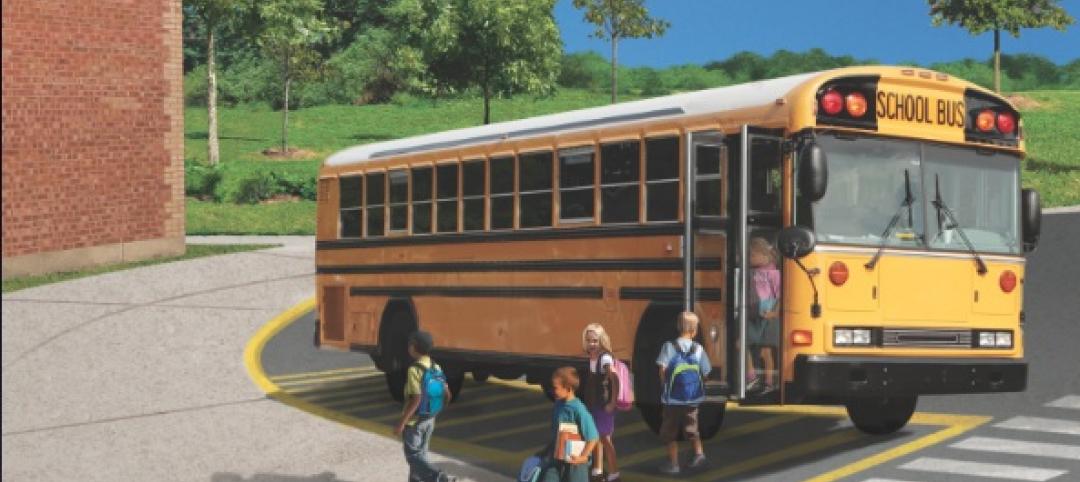"Will a camera stop crime? No, but it can be a deterrent,” says Pat Lamb, School Safety Director, Irving (Texas) Independent School District. Technology is an important component of school security, but it is no panacea.
The good news is that security technology keeps getting better and better. But security hardware and software—and the systems integration expertise that goes with it—does not come cheap.
(Editor's Note: This article is the second in BD+C's five-part special report on security design for K-12 school projects. Read the full report.)
Based on advice from the technical experts consulted for this Special Report, here are key technology-related considerations you should discuss with your school district clients:
1. Look for PTZ cameras, which point, tilt, and zoom. Due to their ability to cover more space on an active basis, you may be able to use fewer cameras with PTZs, thus saving money for your K-12 client.
2. Make sure cameras provide facial recognition at all entry points to the building. The receptionist should not have to ask visitors, “Could you please step back so I can see your face?”
3. Cameras should be capable of at least seven frames/second, says Ultrasafe Security’s Ron Lander, a veteran of 23 years with the LA County Sheriff’s Department.
4. Cameras should be positioned to afford good sight lines down hallways, into stairwells, and outside restrooms and locker areas.
5. Cameras should have bullet-resistant domes and should not freeze. And never use a “dummy” camera—they don’t serve as a deterrent, says security consultant Ken Glantz.
6. Go for IP-based surveillance systems, rather than analog. “Anyone who’s running coaxial cameras today is outdated,” says Larry Johnson, Security Director, Grand Rapids (Mich.) Public Schools.
7. Investigate PoE, or “power over Ethernet,” for school districts’ camera and door-locking systems, advises John Laney, Chief Operations Officer, North Texas Communications. PoE passes electrical power along with data on Ethernet cabling. This greatly reduces the amount of wiring needed and makes it much easier to retrofit older schools, says Laney.
8. All doors with access to the exterior should able to be locked down; if held open more than, say, 30 seconds, a “Door Open” alarm should be sent to the front office and the School Resource Officer.
9. For retrofits, look into locking systems that let you secure doors through the crash bar or door strike, thus making the “open back door” problem much less of a security risk.
10. Help the school district decide on the appropriate locking protocol for classroom doors. Teachers should have the ability to lock doors from the inside, but there should be a failsafe to prevent children from doing so. There are systems that allow the principal to lock down all classroom doors in an emergency, but the teacher should still be able to open the door to let a child in. In no case should a teacher have to lock the door from outside the classroom.
11. Manual key systems are passé. Keys are too easy to duplicate, or they get lost. IP-based door hardware is the way to go, for new schools or retrofits.
12. Mass notification systems—for robocalls to first responders, parents, and staff—are readily available from manufacturers, but remind school officials that, with people changing their mobile providers all the time, correct phone numbers have to be constantly updated.
13. Work with the school district security team to find the best options for intercom systems, alarm annunciators, internal notification systems, and two-way radios.
14. Make sure bus drivers’ radios tie in to the main office or to local police—or both. “With some of these systems, the driver can only talk to the bus garage, and the garage has to call the police,” says security consultant Alan Brockbank. “Precious seconds can be lost, and those few seconds matter.”
15. School buildings should have at least a 100-kW UPS power backup for cameras, DVRs, and annunciation/notification systems. UPS systems should be tested on a regular basis and properly maintained.
16. For new and retrofit lighting, consider LEDs. “They’re a little expensive, but the ROI is fantastic, and you want good lighting for security purposes,” says Lander. “If it comes to a hostage situation, you need light, because not every first responder is going to have a nightscope.”
One last suggestion: Because security technology is changing so fast, your firm should assign a staff member to monitor new products, their costs, and their capabilities, not just for use in schools, but in any security-sensitive sector where your firm has a strong presence—retail, hotel, office, financial services, government, and defense.
(Editor's Note: This article is the second in BD+C's five-part special report on security design for K-12 school projects. Read the full report.)
Related Stories
Mixed-Use | Jan 26, 2015
MVRDV designs twisty skyscraper to grace Vienna's skyline
The twist maximizes floor space and decreases the amount of shadows the building will cast on the surrounding area.
Sponsored | | Aug 16, 2014
Fire-rated framing system makes the grade at Johnson & Wales University Center
The precision engineering of TGP’s Fireframes Aluminum Series creates narrow profiles and crisp sightlines at Johnson & Wales University Center for Physician Assistant Studies
| May 20, 2014
Using fire-rated glass in exterior applications
Fire-rated glazing and framing assemblies are just as beneficial on building exteriors as they are on the inside. But knowing how to select the correct fire-rated glass for exterior applications can be confusing. SPONSORED CONTENT
| Mar 12, 2014
14 new ideas for doors and door hardware
From a high-tech classroom lockdown system to an impact-resistant wide-stile door line, BD+C editors present a collection of door and door hardware innovations.
| Mar 12, 2014
New CannonDesign database allows users to track facility assets
The new software identifies critical failures of components and systems, code and ADA-compliance issues, and systematically justifies prudent expenditures.
| Jan 13, 2014
AEC professionals weigh in on school security
An exclusive survey reveals that Building Teams are doing their part to make the nation’s schools safer in the aftermath of the Sandy Hook tragedy.
| Jan 10, 2014
What the states should do to prevent more school shootings
To tell the truth, I didn’t want to write about the terrible events of December 14, 2012, when 20 children and six adults were gunned down at Sandy Hook Elementary School in Newtown, Conn. I figured other media would provide ample coverage, and anything we did would look cheap or inappropriate. But two things turned me around.
| Jan 10, 2014
Special Report: K-12 school security in the wake of Sandy Hook
BD+C's exclusive five-part report on K-12 school security offers proven design advice, technology recommendations, and thoughtful commentary on how Building Teams can help school districts prevent, or at least mitigate, a Sandy Hook on their turf.
| Jan 9, 2014
How security in schools applies to other building types
Many of the principles and concepts described in our Special Report on K-12 security also apply to other building types and markets.
| Jan 9, 2014
Special report: Can design prevent another Sandy Hook?
Our experts say no, but it could save lives. In this report, they offer recommendations on security design you can bring to your K-12 clients to prevent, or at least mitigate, a Sandy Hook on their turf.


